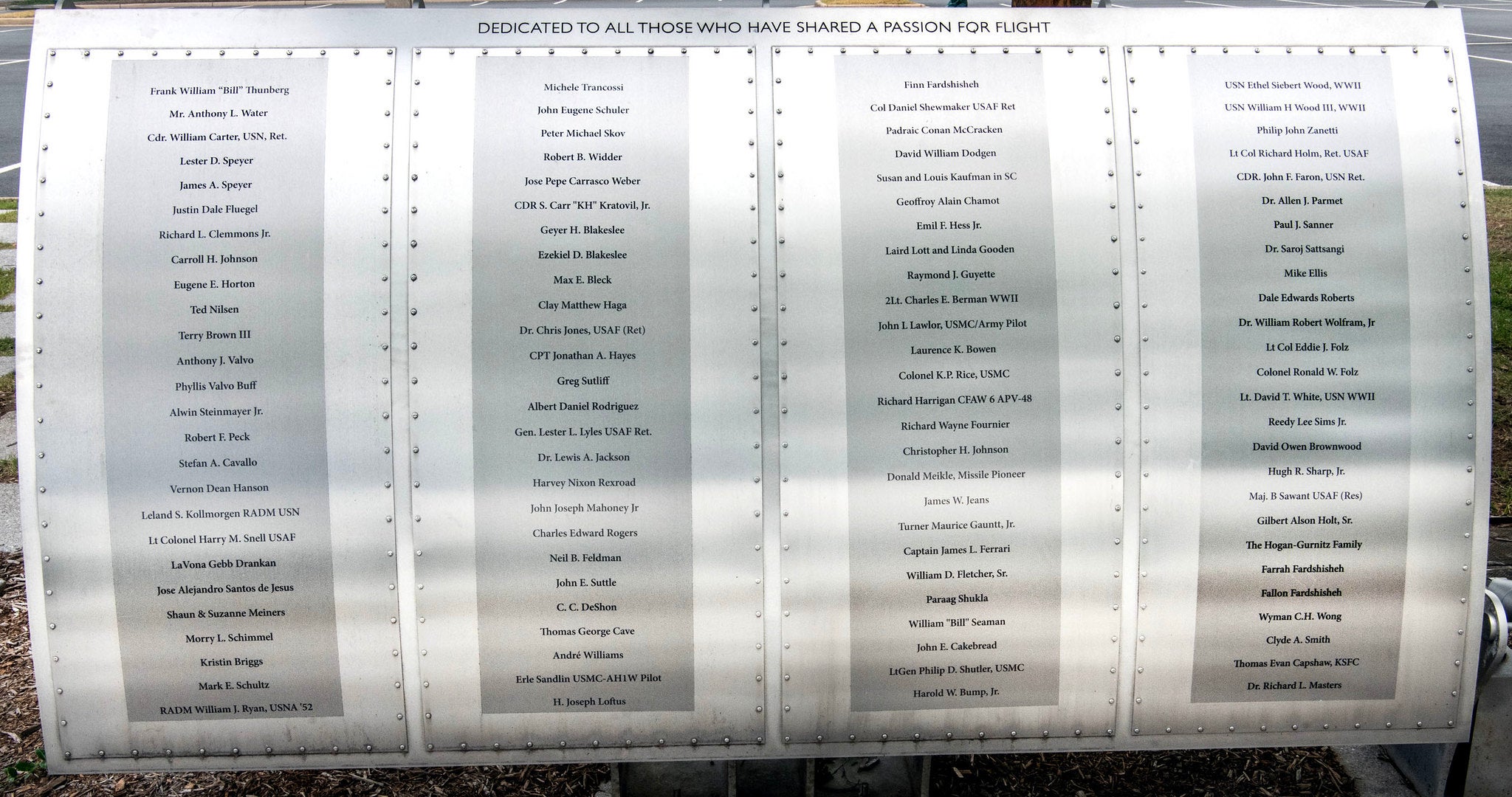Foil: 47 Panel: 4 Column: 1 Line: 25
Wall of Honor Level: Air and Space Leader
Honored by:
Tamara Salmon
THOMAS EVAN CAPSHAW
(1930 ?€“ 2012)
Thomas Evan Capshaw was born in Granite Falls, North Carolina, in December 1930. He was one of five children and the only son of his parents. When he was 11 years old, his father, who had been the mill superintendent, died unexpectedly, leaving his mother as the family's sole source of support. Tom's interest in helping support the family resulted in him leaving school at the age of 17 to join the U.S. Navy. In the Navy, he was assigned to the Auxiliary Group of the Engineering Division. It was here that he learned his love of engineering and his aptitude for it. He served in the Navy from 1948 until 1953, which included two tours of duty during the Korean War and his crossing the equator where he graduated from being a "Pollywog" to being a "Shellback." While in the Navy, he pursued his love of baseball by serving as the (left-handed) catcher on the Naval Station All-Star Team in Kwajalein, Marshall Islands. The Team won their All-Star playoffs 14-2. Tom had three hits in the game, one of which was a home run! Upon his discharge from the Navy, Tom used the G.I. bill to pursue his interest in and love for engineering by attending the Capitol Radio and Engineer Institute (CREI) in Washington, DC. Today CREI is the Capitol Technology University in Laurel, MD.
The engineering degree Tom obtained from CREI set him on the road to a career that was, in his words, "an engineer's dream." It included:
-Helping develop a classified Infra-Red Detection system at McDonnell Douglas in St. Louis, MO. This system, which was state of the art at the time, enabled military pilots to track airplanes from their tailpipe emissions in a passive mode, fire a missile, and shoot the plane down;
- Heading up the engineering support team on the Submarine Warfare Simulator that was being built for the Navy at the Boca Chica Naval Air Station in Key West, FL. The simulator was the first hybrid simulator built by McDonnell Douglas that utilized both analog and digital computers to assist with the equations necessary to build the tactical system to simulate the S2E twin engine prop-driven plane that would be used to locate and sink enemy submarines;
- Serving as the Project Manager at the Image Processing Lab at Jet Propulsion Laboratory in Pasadena, CA, where his role was to digitize pictures being sent from the moon to determine the landing site for the first Apollo moon landing. Because of the significance of these images to the space program, the room in which this work was conducted at JPL still has a wall displaying the images used by NASA in deciding upon the space landing. While at JPL, he also worked on a Spacecraft Color Television experiment that was on the Apollo Command Module that orbited the moon while the astronauts and Lunar Module were on the moon. His final work at JPL involved being responsible for the Camera System Calibration on the Mariner 69, which was a spacecraft scheduled for a Mars fly-by in 1969;
- Serving as Computer Science Corporation's Project Manager at Goddard Space Flight Center in Greenbelt, MD for the Landsat-C remote sensing satellite next scheduled to orbit earth. This job involved using a High-Resolution File Recorder that used a laser as its scanning beam, which was state-of-the-art technology at the time. The Landsat scanned the entire earth and, after the data was recovered and processed, it was sent to the Earth Resources Observation and Science (EROS) Data Center in Sioux Falls, SD. [The EROS Data Center is the national archive of all remotely sensed images of the earth.] While at Goddard, he also helped develop a process to send picture data to the Domestic Satellite (DOMSAT) for transmission directly to the EROS Data Center; and
- Working at Kennedy Space Flight Center (KSFC) in Cape Canaveral, FL, where he finished out his career. At KSFC, he first served as Department Manager for Quality Control on the space shuttle launch processing system. This position led to him being named as the Department Manager of the Measurements Department, where he was responsible for all ground instrumentation relating to the shuttle program.
In 1982, he received the NASA Public Service Medal for his contribution to the space shuttle program. He retired from Kennedy Space Flight Center in 1998.
Along the way, Tom and his loving wife of 57 years, Barbara Gentle Capshaw of Statesville, NC, raised four daughters who adored and respected him. Outside of work, he became a scratch golfer and took up flying to continue exploring the skies!
Wall of Honor profiles are provided by the honoree or the donor who added their name to the Wall of Honor. The Museum cannot validate all facts contained in the profiles.
Foil: 47
